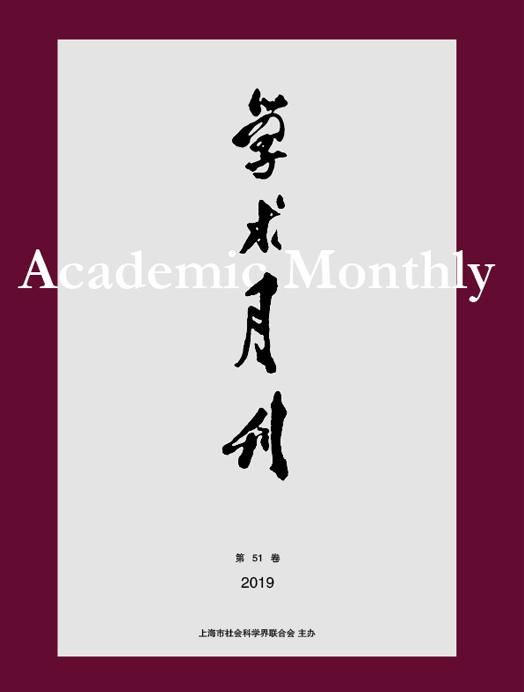Citation:
Shan ZHOU. Xiong Shili’s Qian Kun Yan: A Rectification[J]. Academic Monthly, 2018, 50(12): 5-16.

Xiong Shili’s Qian Kun Yan: A Rectification
-
Abstract
Xiong Shili’s Qian Kun Yan (《乾坤衍》) puts Confucius’s 50 years old as a dividing line for the two stages of his early and later periods, and believes that the Zhou Yi (《周易》The Book of Change of Zhou Dynasty) was written by Confucius when he was 50. Xiong also holds that the relationship between qian and kun, between nature and soul, between and essence and energy are the ones of spirit and matter. When explaining the trigrams, qian and kun, Xiong believes that qian reveals the life from hidden to emerging, and from emerging to thriving, which means the oppressed mass rise to make revolution, and finally wipe out the ruling class to give freedom to everybody. The trigram of kun was depicted as that the lower people rise to make revolution and abolish the emperor system, while the masses own the power. Such viewpoints are rectified by this thesis, and the author believes that the Zhou Dynasty noble class already uses Zhou Yi to solve problems more than 100 years before Confucius’ birth. There three major mistakes in Qian Kun Yan. Firstly, it is wrong to separate Confucian ideas into absolutely different periods. Secondly, Xiong asserts Confucius as the author of Zhou Yi without reliable historical data. Thirdly, Xiong neglected the true meaning of qian and kun trigrams to explain them for the meaning of revolution, as if Confucian teachings advocate social revolution. These misreading make, at a certain level, chaos to the healthy development of the studies of Confucianism and Yi Jing.
-

-
References
-
Access
-
-
[1]
Zhirong Zhu
. On the View of Imagery in Zhouyi. Academic Monthly,
2019, 51(2): 124-1.
-
[2]
. . Academic Monthly,
2016, 48(06): 13-23.
-
[3]
. . Academic Monthly,
2016, 48(08): 16-31.
-
[4]
Zhongjun LIN
. On Zhu Xi’s Re-establishment of Divination of Zhouyi and Explanation of Yi-ology. Academic Monthly,
2020, 52(9): 28-38.
-
[5]
,
. . Academic Monthly,
2016, 48(09): 133-139.
-
[6]
,
. . Academic Monthly,
2023, 55(3): 210-216.
-
[7]
Qintong LI
. The Confucianization of Law and Its Explanation. Academic Monthly,
2020, 52(8): 157-169.
-
[8]
Yuchang HE
, Wei WANG
. The Nature and Application of Digital Productivity. Academic Monthly,
2021, 53(7): 55-66.
-
[9]
HUANG Chunchun
. Attention Allocation and Economic Decision-making—— Comment and Discussion on Attention Economics. Academic Monthly,
2024, 56(2): 94-102.
-
[10]
,
,
. . Academic Monthly,
2023, 55(4): 209-216.
-
[11]
YU Lu
. The “World Situation” Theory in Late Qing and the Driving Force of the 1911 Revolution. Academic Monthly,
2024, 56(2): 187-196.
-
[12]
,
,
. . Academic Monthly,
2017, 49(01): 5-10.
-
[13]
,
,
. . Academic Monthly,
2018, 50(01): 5-10.
-
[14]
He CAI
, Shuaizhi WANG
. The Influence of Urban Community Correction on Neighborhood Cohesion. Academic Monthly,
2021, 53(2): 125-138.
-
[15]
. . Academic Monthly,
2016, 48(07): 109-122.
-
[16]
,
. . Academic Monthly,
2016, 48(02): 46-55.
-
[17]
,
. . Academic Monthly,
2022, 54(9): 212-216.
-
[18]
Haolong XU
, Ming LU
. Solving the Agricultural Dilemma in China: Farm Scale and Agricultural Competitiveness from International View. Academic Monthly,
2021, 53(6): 58-71.
-
[19]
. . Academic Monthly,
2016, 48(12): 149-160.
-
[20]
HUNANG Ruoshun
. . Academic Monthly,
2023, 55(10): 201-208.
-
-



 沪公网安备 31010102003103号
沪公网安备 31010102003103号 DownLoad:
DownLoad: